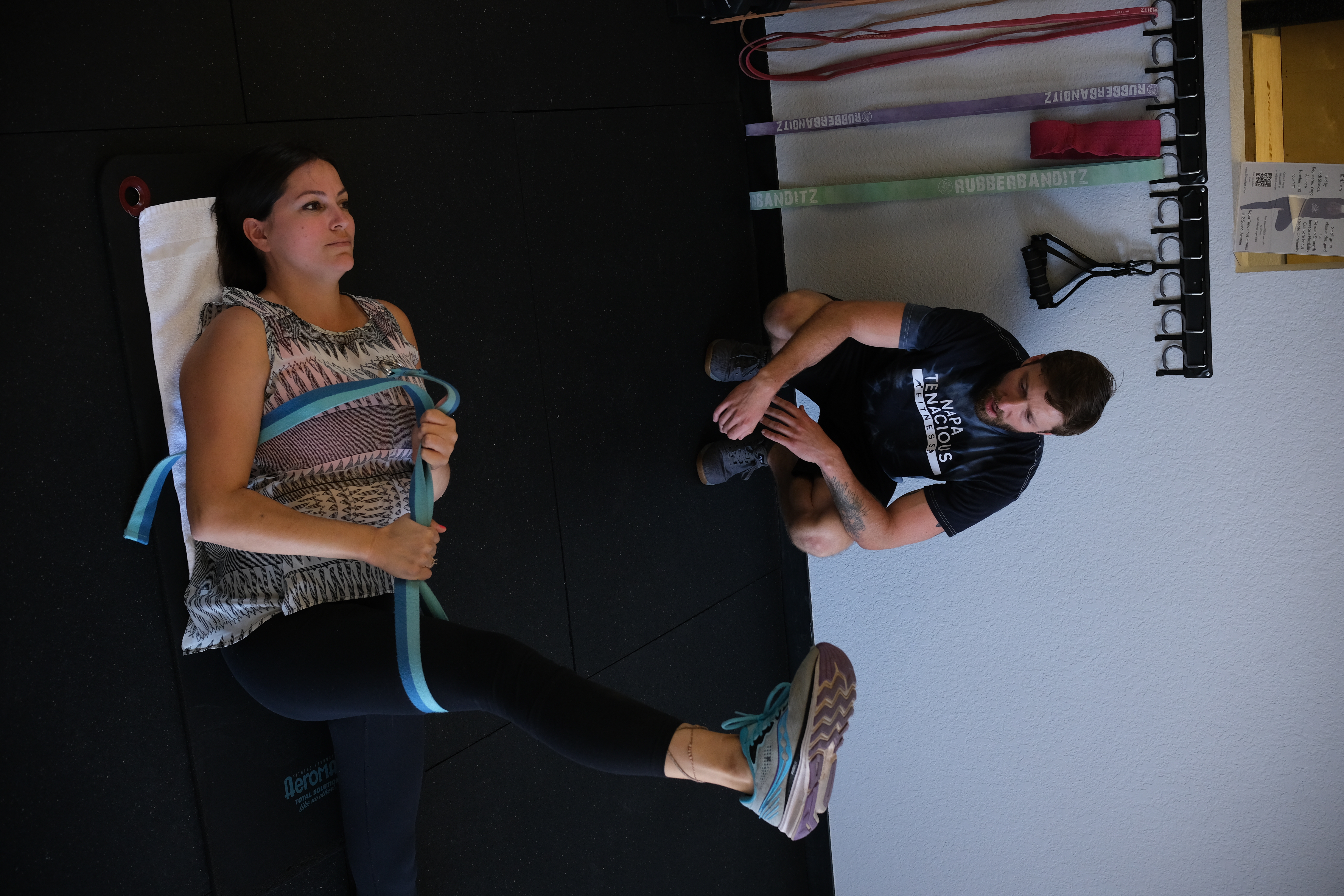The multitude of chores involved in our everyday lives can be challenging to muster up the gumption to complete. The walnut tree in the backyard may have sprinkled its leaves on the ground throughout the winter rains and need to be raked up and stored in the compost bin. A few chipped-off pieces of paint on the side of the house might require the use of climbing up on a ladder and dabbing a few strokes of touch-up paint to fix the imperfections of chipped paint that the wet, cold months of November and December granted us. Perhaps the floors lying in front of our doors require us to get down on our hands and knees and scrub for ten minutes because of the mud and excess water brought in by our companions entering our dwellings. Needless to say, the requirement to accomplish chores can be a real pain in the butt. To competently accomplish these seemingly difficult tasks, we need a body that bends down, climbs, and pivots effectively and efficiently.
If we have pain in our lower extremities, conducting everyday life functions can be challenging. One common symptom that causes pain and inhibits our ability to perform our normal life activities requiring stepping up, getting up and down from sitting, and rotating and pivoting from the hip joint is piriformis syndrome. Also identified as a symptom of sciatica, piriformis syndrome is literally and figuratively a “pain in the butt”. If any of the readers have had to deal with “butt cheek pain,” pain, numbness, and irritable pain produced by this condition can be appreciated.
To better understand piriformis syndrome, it’s helpful to note what the piriformis muscle is, where it’s located, and what its actions are responsible for when optimizing human function. The piriformis muscle is a short, flat muscle residing in the deeper areas of the pelvis and hip region. It originates at the front portion of the sacrum and pelvis and is attached to the upper portion of the femur. It’s responsible for the external rotation of the hip throughout the various movements involved in standing up, walking, getting up from chairs, and rotating the thighs to the outside of the body. Additionally, the piriformis acts as an isometric stabilizing muscle when we rotate our torso while standing, sitting, or reaching for something to the outside of our body. One could imagine what life would be like if one of these normal functions were taken away due to gluteal pain.
Underneath the piriformis resides one of the most important motor nerves responsible for innervating the lower extremities, the sciatic nerve. This massive nerve originates from the base of our spine, travels through the buttock region, and traces down the back of the leg down to the heel. When there is pressure on the sciatic nerve, the nerve is disrupted and sends out signals of stress throughout the muscles innervated by the nerve. These symptoms include searing, “zinging,” dullness, or weakness through the various muscles attached to this nerve. So, what would cause such a disruption to this important nerve located under our buttocks? If you read the title of this article, you guessed right. A tight piriformis muscle presses down on the sciatic nerve to create piriformis syndrome.
For such a small muscle, the piriformis can pack a punch and derail our normal human function. If our goal is to live in less pain, perform our everyday tasks efficiently, and be the strongest and most capable version of ourselves, ensuring we have strong, durable, and healthy hip muscles is a critically important requirement. Here are a few simple and effective exercises we conduct with our personal training clients who have symptoms akin to piriformis syndrome:
Supine Isometric Hip Extension: Start by positioning yourself flat on your back on the ground with your arms extended and your knees bent. Press your feet into the ground and lift the hips upward until a brief muscular sensation is experienced in the hamstrings and glutes. Once your hips are extended upward, hold this position utilizing your glutes and hamstrings to stabilize the hips in an extended position for 10 to 30 seconds.
Knee Tilt Stretch: Start by positioning yourself flat on your back on the ground with your arms extended and your knees bent. Tilt your knees to one side of the body as far as you can while keeping your knees and ankles touching. After a brief stretching sensation is experienced in the lower back and outer hip, alternate this motion to the other side. Repeat this movement for five to 10 repetitions on both sides of the body.
Similar to many aspects of maintaining a strong and fit body, a combination of strengthening, mobility, and flexibility exercises need to be evenly allocated throughout an exercise to ensure muscles maintain structural integrity and functional strength. Therefore, stretching and strength training toward the muscles surrounding the gluteal region are critically important to recover from and fend off piriformis syndrome.
Sean McCawley, the founder and owner of Napa Tenacious Fitness in Napa, CA, welcomes questions and comments. Reach him at 707-287-2727, napatenacious@gmail.com, or visit the website napatenaciousfitness.com.

